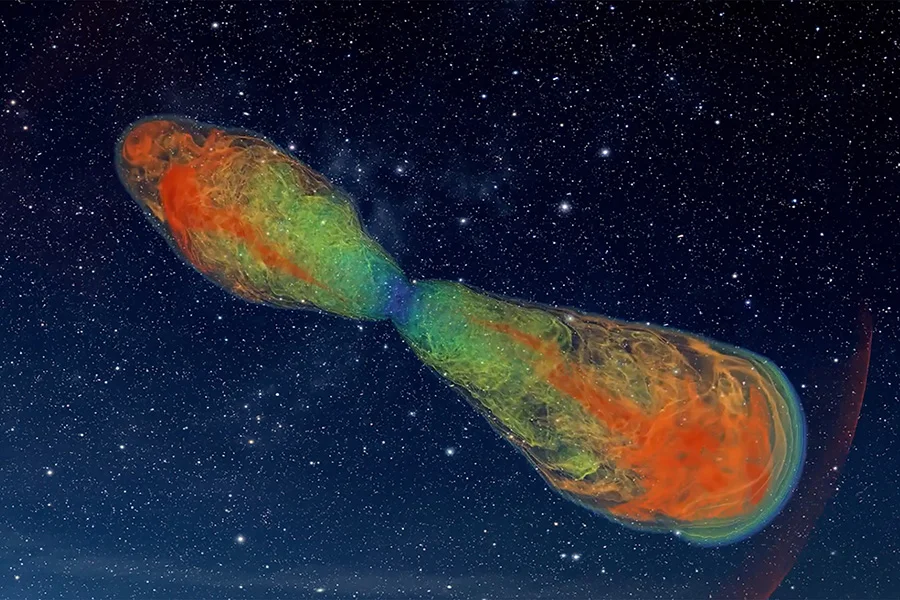We’ll soon be able to “hear” gravitational waves from dying stars
- June 7, 2023
- 0
A team of astronomers has discovered a new possible source of gravitational waves: a cocoon of hot, dense gas forming inside a massive dying star. This resource is
A team of astronomers has discovered a new possible source of gravitational waves: a cocoon of hot, dense gas forming inside a massive dying star. This resource is

A team of astronomers has discovered a new possible source of gravitational waves: a cocoon of hot, dense gas forming inside a massive dying star. This resource is within reach of the recently launched Laser Interferometer Gravitational-Wave Observatory (LIGO).
Giant stars whose mass is 20-40 times the mass of the Sun die especially spectacularly. First, the center collapses, forming a black hole that immediately begins to feed. This process drives two opposing jets out of the star. As the jets pierce the outer layers of the star, they form a hot, dense shell of stellar matter. The gas cocoon that surrounds the jets for a few seconds until they are completely ejected from the star creates space-time ripples, or gravitational waves.
This jet cocoon is what Ore Gottlieb (Northwestern University) and colleagues recently realized can emit gravitational waves.
“To be honest, I wasn’t looking for a cocoon; “I was interested in another source of gravitational waves,” says Gottlieb. “But these cocoons were too powerful to ignore. More or less coincidentally, I tried to understand the gravitational wave emissions.”
It was not immediately clear that these gravitational waves would be of the right height and volume for LIGO to “hear” them. To find out, Gottlieb’s team ran computer simulations that tracked the jets and the surrounding cocoons from their launch near the black hole to the way they burst through the star’s surface and blasted out into space. They then calculated the resulting gravitational wave signal. Gottlieb presented the research at a press conference at the 242nd meeting of the American Astronomical Society.
In contrast to the joyous chirping and chirping of inspiring black hole pairs, the signal from an emerging jet cocoon looks more like an eerie wind howl. The signal would not only be clear, but also loud enough to be detected by LIGO during observations that had just begun on May 24.
More importantly, if we observe the jets from the side, these gravitational waves will be at frequencies within LIGO’s reach. (The jets themselves also produce gravitational waves when facing the beam, but at lower frequencies beyond LIGO’s range.)
This new type of gravitational wave signal could offer astronomers new insights into how stellar cores collapse. This is especially valuable because unless the collapsing stars have jets and cocoons, their supernovae are too quiet for LIGO to hear unless they are very close. These cocoons must also emit light at different frequencies, and the double pulse of gravitational waves and light always catches the attention of astronomers.
Still, supernova stars of this magnitude are rare, and Gottlieb doesn’t expect LIGO to capture that many. “We expect about 1% probability of cocoon gravitational waves in the fourth observation cycle; by the fifth, it should increase to about 10%.” Gottlieb guesses. “The most likely scenario is that we will only detect cocoons in third-generation gravitational wave interferometers.” With all this, you never know what you’ll find by chance. Source
Source: Port Altele
As an experienced journalist and author, Mary has been reporting on the latest news and trends for over 5 years. With a passion for uncovering the stories behind the headlines, Mary has earned a reputation as a trusted voice in the world of journalism. Her writing style is insightful, engaging and thought-provoking, as she takes a deep dive into the most pressing issues of our time.